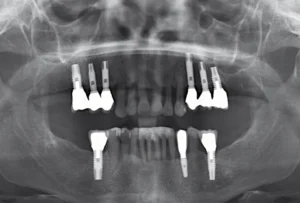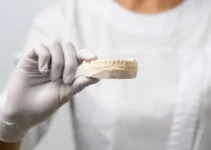When it comes to dental implants, having minimal bone structure can present unique challenges. However, advancements in dental technology and regenerative techniques have made it possible for patients with limited bone to successfully receive implants. This article explores various methods such as bone grafting and the use of mini implants that help in providing stable and enduring solutions even when the jawbone is not ideal for standard implants. Understanding the options available can help patients make informed decisions about their dental health.
Understanding Dental Implants with Little Bone
Dental implants have revolutionized the field of restorative dentistry, offering a permanent solution for tooth loss. However, the success of dental implants largely depends on the amount and quality of the patient’s jawbone. When there is little bone available, the procedure becomes more complex but not impossible. With advancements in technology and techniques, dental implants can still be successfully placed in patients with limited bone.
This article delves into the challenges of placing implants in areas with minimal bone, the initial assessment and planning required, and the types of implants that are most suitable for these conditions. Understanding these aspects will help both patients and professionals make informed decisions for optimal outcomes.
Challenges of Little Bone in Dental Implants
One of the primary challenges when dealing with little bone for dental implants is the lack of stability. Dental implants require a certain amount of bone for successful osseointegration, the process where the implant fuses with the jawbone. Inadequate bone can compromise this process, leading to implant failure.
Other challenges include:
- Difficulty in achieving proper angulation of the implant.
- Increased risk of nerve damage or sinus perforation.
- Potential for bone grafting or other preparatory procedures.
Furthermore, individuals with little bone often have lower bone density, which can affect the longevity and success of the implant. Bone augmentation techniques might be necessary to create a suitable environment for the implant.
Initial Assessment and Planning
A thorough initial assessment is crucial for patients with little bone who are considering dental implants. The process typically starts with diagnostic imaging, such as X-rays or CBCT scans, to evaluate the quality and quantity of the existing bone. These images provide a detailed view of the bone structure, helping the dentist plan the implant placement precisely.
During the initial consultation, the dentist will also review the patient’s medical history and any conditions that might affect bone density, such as osteoporosis or periodontitis. This holistic assessment ensures that all potential risk factors are considered.
Based on the findings, a customized treatment plan is developed. This plan may include bone grafting, sinus lifts, or the selection of specific implant types designed for limited bone scenarios. The goal is to create an optimal foundation for the implant to ensure its long-term success.
Types of Dental Implants Suitable for Little Bone
Several types of dental implants are designed specifically for patients with little bone. One popular option is the mini dental implant, which has a smaller diameter than conventional implants. These require less bone for placement and can often be implanted without the need for bone grafting.
Zygomatic implants are another alternative, especially for patients with severe bone loss in the upper jaw. These longer implants anchor in the zygomatic bone (cheekbone) rather than the maxilla, providing a stable foundation even in cases of extreme bone deficiency.
Other options include short implants, which are engineered to fit in areas with limited vertical bone height, and angled implants, which can be placed at different angles to utilize the available bone more effectively. Each type of implant has its specific indications and benefits, allowing for a tailored approach to meet the patient’s unique needs.
Understanding the various options and the challenges associated with dental implants in patients with little bone is essential for achieving successful outcomes. However, the journey doesn’t end here. Explore our other articles to gain deeper insights into advanced dental procedures and innovations.
Advanced Techniques for Dental Implants with Little Bone
When it comes to dental implants, having sufficient bone density and volume is crucial for the successful integration of the implant with the jaw. However, many patients suffer from bone loss due to various reasons such as periodontal disease, trauma, or prolonged absence of teeth. Fortunately, advanced techniques have been developed to address these challenges and offer effective solutions for dental implants with little bone.
These advanced techniques can significantly improve the outcomes for patients who would otherwise be considered ineligible for traditional dental implants. From bone grafting to specialized implant designs, these methods can help restore functionality and aesthetics in patients with compromised bone structure. In this article, we will explore some of the most promising techniques currently available.
Bone Grafting Methods
Bone grafting is a commonly used method to augment bone volume and density, making it possible for patients with little bone to receive dental implants. This technique involves transplanting bone tissue from another part of the patient’s body or using synthetic materials. Autografts, allografts, xenografts, and alloplasts are some of the types of bone grafts used in dental implantology.
- Autografts: These involve harvesting the patient’s own bone, often from the hip or chin.
- Allografts: These are derived from human donors, processed to ensure safety.
- Xenografts: These come from animal sources, usually bovine.
- Alloplasts: These synthetic materials are designed to stimulate bone growth.
Each type of graft has its own advantages and drawbacks. For instance, autografts are biocompatible and less likely to be rejected but require a second surgical site. Allografts and xenografts eliminate the need for a secondary surgical site but may carry a risk of disease transmission. The choice of grafting method depends on individual patient factors, which are carefully evaluated by the dental surgeon.
Research has shown that bone grafting techniques have high success rates, making them a viable option for many patients. According to a study published in the Journal of Dental Research, bone grafts have a success rate of over 90% in creating a suitable environment for dental implants.
Use of Mini Implants
Mini implants are another innovative solution for patients with insufficient bone. Unlike traditional implants, mini implants have a smaller diameter, making them easier to place in areas with limited bone volume. They are less invasive and often do not require bone grafting, making them an attractive option for both patients and clinicians.
Mini implants are typically used in cases where the patient needs to stabilize a denture, but they can also be used for single tooth replacements in specific situations. Due to their smaller size, these implants can be placed in a single visit under local anesthesia, offering a quicker and more comfortable alternative to traditional dental implants.
Despite their smaller size, mini implants have been shown to have high success rates. Studies published in the International Journal of Oral & Maxillofacial Implants indicate that the success rate of mini implants is comparable to that of traditional implants, particularly when used for denture stabilization. This makes them an excellent option for patients with limited bone structure.
Zygomatic Implants
Zygomatic implants offer a groundbreaking solution for patients with severe bone loss in the upper jaw. These implants are anchored in the zygomatic bone, also known as the cheekbone, which typically has more bone density and volume than the maxillary bone. This technique allows for implants to be placed without the need for extensive bone grafting procedures.
Unlike traditional implants that are placed vertically into the jawbone, zygomatic implants are longer and are inserted at an angle, extending into the zygomatic bone. This provides a stable and robust foundation for dental prosthetics, even in cases of extreme bone resorption.
Research has demonstrated the efficacy of zygomatic implants. A study in the Clinical Oral Implants Research journal reported high survival rates for zygomatic implants, making them a reliable option for patients with significant bone loss. The technique has been particularly successful in patients who have previously undergone failed conventional implant procedures.
Zygomatic implants require specialized training and expertise, and they are usually performed by experienced oral and maxillofacial surgeons. If you are considering this option, it is essential to consult with a specialist who has extensive experience with zygomatic implants.
In conclusion, while traditional dental implants may not be suitable for all patients, advanced techniques such as bone grafting, mini implants, and zygomatic implants provide viable alternatives. These innovative methods can restore both function and aesthetics, even in cases of limited bone structure. If you found this article helpful, be sure to explore our other pieces on dental health and implantology for more in-depth information.
Preliminary and Post-Operative Care
Dental implantology is a specialized field that requires detailed planning and meticulous care both before and after the procedure. The success of dental implants greatly depends on the preliminary evaluation and post-operative care. Understanding the best practices in these areas ensures that patients can achieve the most favorable outcomes and maintain their implants for years to come.
Various studies have highlighted the importance of thorough pre-operative evaluations to identify potential risk factors and customize treatment plans. Likewise, comprehensive post-operative care is crucial for successful osseointegration and the long-term health of the implant. This section will delve into the key aspects of preliminary and follow-up care.
Pre-Operative Evaluation
Before undertaking a dental implant procedure, a detailed pre-operative evaluation is essential. This assessment involves a comprehensive review of the patient’s medical and dental histories to identify any underlying conditions that may affect the success of the implant. Factors such as bone density, gum health, and overall systemic health need to be carefully considered.
Diagnostic tools like X-rays, CBCT scans, and dental impressions are often utilized to create a detailed map of the patient’s oral anatomy. These tools help in planning the optimal placement of the implants and in assessing the need for any additional procedures like bone grafting or sinus lifts. It’s also important to discuss the patient’s lifestyle habits such as smoking and alcohol consumption, as these can significantly impact the healing process and overall success rates of dental implants. Customized pre-operative care plans that may include smoking cessation programs, dietary adjustments, and oral hygiene improvements are often recommended.
Post-Operative Care for Dental Implants
Immediately after the implant placement, post-operative care is critical for promoting healing and ensuring the success of the implant. The first few weeks post-surgery are crucial as the body begins the process of osseointegration, where the implant integrates with the bone.
Patients are usually advised to follow specific guidelines to minimize complications and support healing. These include:
- Maintaining a soft food diet to avoid putting pressure on the implant site.
- Practicing excellent oral hygiene without disturbing the surgical area.
- Using prescribed medications such as antibiotics and anti-inflammatories to prevent infection and manage pain.
- Avoiding activities that can cause trauma to the surgical site, such as vigorous exercise or using straws.
Regular follow-up appointments are necessary to monitor the healing process and make any necessary adjustments. Signs of complications like excessive swelling, persistent pain, or infection should be addressed promptly to prevent long-term issues.
Long-Term Maintenance and Follow-Ups
Successful dental implants require ongoing care and monitoring even after the initial healing phase. Long-term maintenance includes routine dental check-ups and professional cleanings to ensure that the implant and surrounding tissues remain healthy.
Patients are often advised on specific oral care practices tailored to dental implants. Using non-abrasive toothpaste, soft-bristled brushes, and interdental cleaners can help maintain the health of the implant. It’s also crucial to avoid habits that can place undue stress on the implants, such as teeth grinding or using teeth as tools.
Long-term follow-ups allow for the early detection and management of any potential issues such as peri-implantitis, which is inflammation around the implant that could lead to bone loss if left untreated. Regular visits to the dentist ensure that any signs of complications are caught early and addressed promptly. In conclusion, comprehensive preliminary and post-operative care is fundamental in ensuring the longevity and success of dental implants. By adhering to best practices and maintaining regular follow-ups, patients can enjoy the benefits of dental implants for many years. As you dive deeper into the world of dental implantology, consider exploring other articles that further elaborate on specific techniques and advancements in this exciting field.
FAQs About Dental Implants with Little Bone
If you’re considering dental implants but have been told you have insufficient bone density, you might have several questions about the available options. Here are some common inquiries about getting dental implants when bone quantity is a concern.
What are my options if I have little bone for dental implants?
If you have limited bone density, there are several advanced techniques that can help make dental implants possible. Options include bone grafting, where new bone is added to create sufficient support for the implants, and the use of shorter or narrower “mini” implants. Advanced imaging techniques can also help dentists optimize the placement of implants in the available bone structure.
Is bone grafting always necessary for dental implants?
Not always. Bone grafting is a common solution for increasing bone volume, but it’s not the only route. Depending on the location and amount of bone loss, practitioners might recommend other solutions such as using specially designed implants that maximize contact with existing bone, sinus lifts in upper jaw cases, or employing techniques like guided bone regeneration. The best approach depends on individual circumstances and a thorough evaluation by a dental implant specialist.

My name is Salman Kapa, a 73-year-old expert in bone regeneration and dental implantology. With decades of experience in the field, I am dedicated to advancing our understanding of oral health and hygiene. Through my research and writing, I aim to contribute to the development of innovative solutions in dental care.




